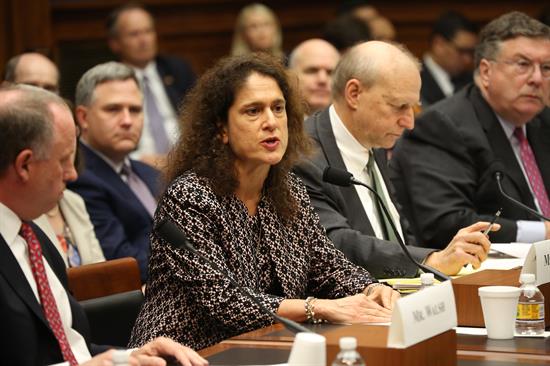Today, the Subcommittee on Health, Employment, Labor, and Pensions, chaired by Rep. Tim Walberg (R-MI), held a hearing to examine four bipartisan proposals to simplify and modernize retirement plan administration for businesses large and small, as well as the employees who benefit from the retirement plans offered.
The hearing focused on legislative proposals that would update the Employee Retirement Income Security Act (ERISA) that governs and sets minimum standards for employee benefit plans.
“Many ERISA provisions related to retirement plan administration are in desperate need of updating, with some having last been revised over two decades ago,” said Rep. Walberg in his opening remarks.
Today, there are nearly 700,000 private pension plans covering almost 135 million participants, with approximately 92.5 million American workers actively participating in and contributing to their plans.
“Red tape and unnecessary federal restrictions stand in the way of lower costs for small businesses and have contributed to compliance uncertainty, making it harder for employers to provide their employees with retirement savings programs,” continued Walberg. “These are not the most encouraging things to hear as more Americans are retiring, and studies show that Americans should be saving more for retirement.”
“Ensuring that American retirees can count on not only having sufficient assets, but as importantly, income that is guaranteed to last throughout their retirement is among the most critical issues facing our economy over the next generation as baby boomer retirements accelerate,” said Tim Walsh, Senior Managing Director at TIAA.
“With about 100 million active and retired workers (and their spouses) accumulating retirement savings under employment-based retirement plans and IRAs, it is critical that all key stakeholders – government, employers, individual investors, and service providers – continually look at ways to make the system better,” said Krista D’Aloia, Vice President and Associate General Counsel of Fidelity Investments.
Subcommittee members and witnesses discussed four bipartisan proposals that would amend ERISA to better meet the retirement plan needs of employees and employers with businesses large and small:
- H.R. 4604, the Increasing Access to a Secure Retirement Act of 2017, reduces the compliance uncertainty that companies face by amending ERISA to clarify existing rules that provide a fiduciary safe harbor when selecting an annuity provider.
- H.R. 4158, the Retirement Plan Modernization Act, increases the automatic cash-out limit for retirement plans from $5,000 to $7,600, and defrays some of the costs of retirement plan administration for small employers.
- H.R. 854, the Retirement Security for American Workers Act, eliminates two burdensome requirements affecting multiple employer plans: the “common nexus” requirement that prevents adoption of open multiple-employer plans (MEPS), in which unrelated employers may collectively satisfy plan administration requirements, and the “one bad apple” rule that punishes all employers in a plan for the failure of one employer to meet the plan’s requirements.
- H.R. 4610, the Receiving Electronic Statements to Improve Retiree Earnings Act, authorizes the electronic disclosure of retirement plan information so that plan participants may access their plan information online.
“The foregoing proposals would go a long way toward improving the successful defined contribution plan system and better equipping American workers with the tools needed to build a secure retirement,” said Paul Schott Stevens, President and CEO of the Investment Company Institute.
The Committee on Education and the Workforce will continue to explore the bipartisan solutions discussed at the hearing to modernize and strengthen retirement plans for future retirees.
To learn more, click here.
# # #

